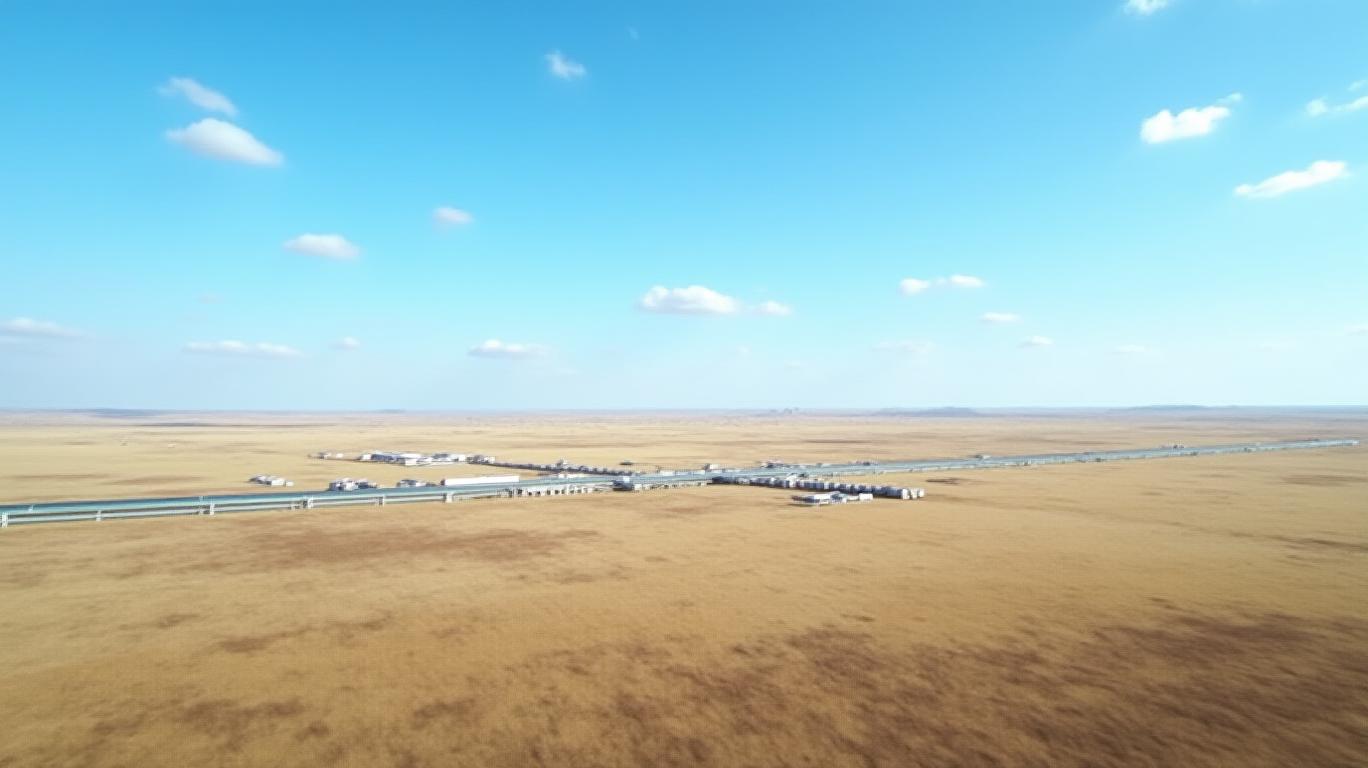DT Midstream Navigates Q1 Earnings with Mixed Signals: Operational Strength Meets EPS Miss
DT Midstream (NYSE: DTM) delivered a quarter marked by operational progress but fell just short of Wall Street’s expectations, revealing the fine line between growth and profitability in the natural gas midstream sector.
The company reported a non-GAAP EPS of $1.06 for Q1 2025, narrowly missing the consensus estimate of $1.07, as adjusted for one-time items. While the miss was marginal—just $0.01—the results underscore the challenges of balancing infrastructure investments with earnings targets. Meanwhile, Adjusted EBITDA rose to $280 million, reflecting strong cash flow from its sprawling network of pipelines and storage assets.

Operational Momentum Amid Regulatory Crosscurrents
DT Midstream’s operational updates were unequivocally positive. The company advanced its $2.3 billion project backlog, including the start of construction on a Midwestern Gas Transmission lateral to serve power plants. CEO David Slater emphasized that these projects are “central to our growth strategy,” while CFO Jeff Jewell reaffirmed the company’s “firmly on track” progress toward 2025 goals.
The integration of new interstate pipelines also bolstered efficiency, hinting at future throughput gains. However, these investments come amid heightened scrutiny of fossil fuel infrastructure. The Inflation Reduction Act (IRA) and broader climate policies loom as risks, potentially slowing permitting or altering demand dynamics.
The EPS Miss: A Closer Look
While the EPS shortfall was minor, it’s worth noting that GAAP net income of $108 million ($1.06 diluted) lagged non-GAAP metrics. The company cited uncertainties around impairments and regulatory shifts, declining to reconcile forward-looking Adjusted EBITDA guidance to GAAP terms. This opaqueness raises questions about how future earnings might be affected by one-time costs or policy changes.
Sustainability and Shareholder Returns: A Dual Focus
DT Midstream’s commitment to decarbonization remains a key differentiator. The company reiterated its goal to reduce carbon emissions by 30% by 2030 and achieve net-zero emissions by 2050—a pledge that aligns with investor demand for ESG accountability. However, the cost of retrofitting infrastructure or adopting cleaner technologies could pressure margins in coming years.
Shareholder returns also took center stage, with the declaration of a $0.82 quarterly dividend, maintained despite the EPS miss. Institutional investors appear undeterred: PACER Advisors and Blackstone significantly boosted holdings in late 2024, while Energy Income Partners reduced its stake.
Risks on the Horizon
The company’s forward-looking risks include:
- Regulatory Headwinds: The IRA’s impact on project economics remains unclear, and climate policies could accelerate the shift to renewables.
- Commodity Volatility: Natural gas prices have fluctuated sharply, impacting demand for midstream services.
- Project Execution: Delays or cost overruns on the $2.3 billion backlog could strain cash flow.
Analysts and the Market: A Split View
Analysts are cautiously optimistic, with a median price target of $99.50 (as of April 2025). While UBS and Citigroup maintain “Buy” ratings, Goldman Sachs issued a “Sell” call in late 2024, citing valuation concerns. The stock trades near $98.74, up 59.8% over the past year, but faces pressure to justify its P/E ratio of 24.52, which is elevated compared to peers.
Conclusion: A Company at a Crossroads
DT Midstream’s Q1 results highlight its operational resilience but also the precariousness of its financial narrative. The company’s infrastructure investments and sustainability goals position it for long-term relevance, yet near-term profitability hinges on navigating regulatory and market uncertainties.
Investors should weigh the positives: a robust project pipeline, a maintained dividend, and institutional buying—against the risks of earnings volatility and shifting policy landscapes. With shares near $99 and a $250 million Distributable Cash Flow, the company has room to maneuver. However, the path to sustained outperformance will require closing the gap between expectations and execution, particularly as non-GAAP metrics take center stage.
For now, DT Midstream remains a tale of two halves: one of progress, the other of precision. The question is whether its operational strength can outpace the growing complexity of its industry.

Comments
No comments yet